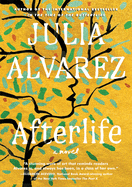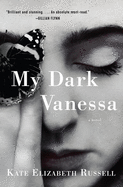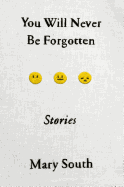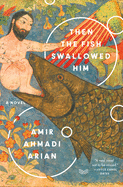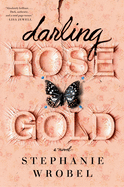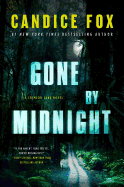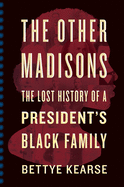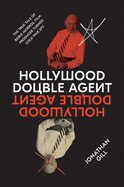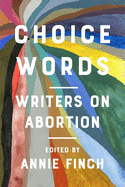 |
| (photo: Siggi Holm) |
Laura Bates is a U.K.-based author and the founder of the Everyday Sexism Project, a crowd-sourced collection of stories from women around the world about their experiences with misogyny and sexism. Bates writes regularly for the Guardian, the Independent and Time, among others, and is the author of Everyday Sexism, Girl Up and Misogynation. The Burning (Sourcebooks Fire, April 7, 2020) is her first work of fiction.
The Burning draws a parallel between the contemporary concept of "slut-shaming" and the 17th-century practice of prosecuting and executing young women as witches. How have things changed between the 1600s and now?
One of the things that most shocked me when I began my research was just how little has really changed. If you read the transcripts and records of the 17th-century witch trials that swept through Europe, you see the same obsession with shaming and controlling women, the same fear and stigma around their sexuality, the same tendency to blame victims instead of perpetrators. Girls are still being told their bodies are powerful and dangerous, and it is their job to cover them up and to pay the price for the behavior of their male peers. Boys are still being taught they are not responsible for their own actions. So little has changed.
Anna is 14 when her boyfriend shares a nude photo of her on social media. She, like far too many girls and young women today, is then sent down a nightmarish path of viral social media infamy and local harassment. What do you hope readers will take away from Anna's experience?
For a generation of digital natives, the enormous pressure to send nude pictures and the extreme slut shaming of girls who do is almost mundane. But for the generation of non-digital natives who parent and educate them, the story comes as a shock, with many struggling to believe it can really be happening. I wanted to provide a window into this world for adults who might not be aware of the reality of teenagers' online lives. And for young women, who repeatedly receive the message that this is their own fault, I wanted to show that they have nothing to be ashamed of, and that they can take back control of their own stories.
After she and her mother flee their home in England for a "fresh start" in Scotland, Anna is terrified her new friends and peers will learn her secret. Is there any such thing as a fresh start in the age of social media?
We are still struggling with the inadequacies of social media platforms when it comes to keeping users safe online. But I feel hopeful that norms can change and protest can make a difference. We are seeing a wave of courageous and powerful young women speaking out about their experiences and refusing to be silenced. My hope in The Burning was to show that you don't necessarily need to erase the past in order to overcome it--that we need to build a more tolerant and fair society that gives survivors a second chance.
Anna has a strange, almost mystical connection with Maggie, the young woman who lived in her village almost 400 years ago. How did you hope Maggie would help Anna get through her traumatic ongoing experience?
One of the very worst parts of being shamed and abused, as both Anna and Maggie discover, is the feeling of being alone. The young women I work with who have experienced revenge pornography or slut shaming are often cruelly isolated and left feeling that nobody is on their side. I hope The Burning offers a message of hope: that female friendship and solidarity is one means of overcoming and resisting the sexist abuse girls face. I wanted to symbolize that by building a sustaining bond between Anna and Maggie, even though their stories unfold four centuries apart.
Why didn't Anna's or Maggie's friends continue to stand by their sides?
One of the cruelest aspects of misogynistic persecution is the intense pressure it places on women and girls to turn on each other in order to survive. Four hundred years ago, this manifested itself as the urge to shout "I saw Goody Johnson with the Devil," because accusing another woman of witchcraft could save you from suspicion. Today, it emerges when girls are driven to join in the slut shaming of their peers in order to protect themselves from similar treatment.
There are two scenes when Anna finally gets the kind of kickass support she needs--once when her mom confronts her school headmaster and again when she and her new friends respond to the social media trolls in a powerful way. Is this kind of response to misogyny and injustice possible in the real world?
I know that it is possible, because the scene with Anna's mother is based on a real-life mom! But I also know that it isn't easy. The very best thing any one of us can do is to confront this in our own sphere. The more we protest and challenge these issues, the less normalized and socially acceptable they become, and that is the only way to create the cultural shift we need to see.
As a feminist, writer and visionary, you have won many awards and countless social media followers. What started you on the trajectory of feminism?
In 2012 I was sitting on a bus when a man next to me put his hand on my leg and suddenly grabbed my crotch. I was on the phone to my mum at the time and, shocked, I stood up, moved away from him, and told her, "I'm on the bus and a man just groped me." Everybody on the bus heard. And everybody looked out the window. Their silence made me feel ashamed, embarrassed and to blame, and I got off the bus and walked the rest of the way home. Looking back, I realized that their responses sent that man a powerful message, too: You can get away with this. Nobody will challenge you. I realized that sexism is so normal we don't even react when it happens right in front of us. I wanted to find a way to make the invisible problem visible, and hopefully to help people understand they had a choice to make--to stand up and say something, or continue looking out of the window. --Emilie Coulter
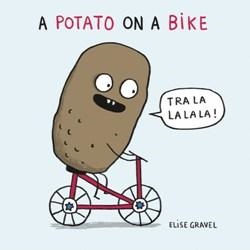 "Have you ever seen... poop wearing glasses?" (Because without them, the poop can't see.) In A Potato on a Bike (Orca Book Publishers, $10.95, ages 0-2), Elise Gravel asks pre-readers if they have seen a bunch of absurd scenarios--a carrot bathing, a fly talking on a phone--then helps them with the obvious answer: "No way!" But so many no's must be leading to a "yes," right? Well, that comes at book's end when Gravel asks, "Have you ever seen... someone tickling a baby?" You know the answer.
"Have you ever seen... poop wearing glasses?" (Because without them, the poop can't see.) In A Potato on a Bike (Orca Book Publishers, $10.95, ages 0-2), Elise Gravel asks pre-readers if they have seen a bunch of absurd scenarios--a carrot bathing, a fly talking on a phone--then helps them with the obvious answer: "No way!" But so many no's must be leading to a "yes," right? Well, that comes at book's end when Gravel asks, "Have you ever seen... someone tickling a baby?" You know the answer. Giraffe is grumpy so his friends decide to cheer him up. In Will Giraffe Laugh? (Cartwheel Books/Scholastic, $7.99, ages 0-3), Hilary Leung's big-eyed animals unsuccessfully try a number of things to make Giraffe laugh: Bear juggles a plunger onto Giraffe's head, Sheep accidentally attacks him with a balloon animal and Frog somehow traps him with its tongue. When Giraffe's friends get grumpy, though, Giraffe realizes it's his job to cheer them up.
Giraffe is grumpy so his friends decide to cheer him up. In Will Giraffe Laugh? (Cartwheel Books/Scholastic, $7.99, ages 0-3), Hilary Leung's big-eyed animals unsuccessfully try a number of things to make Giraffe laugh: Bear juggles a plunger onto Giraffe's head, Sheep accidentally attacks him with a balloon animal and Frog somehow traps him with its tongue. When Giraffe's friends get grumpy, though, Giraffe realizes it's his job to cheer them up.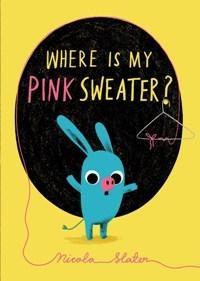 In Where Is My Pink Sweater? (Abrams, $8.99, ages 3-5) by Nicola Slater, Rudy, a tiny blue animal with big floppy ears, has lost his pink sweater. "It was a bit too small and showed his belly button. But it was his favorite." Searching the house, he receives hints about his sweater's location from "NINE jiving llamas," "EIGHT prima pigerinas," even seven dogs "slaloming on the stairs." It's not until he reaches ONE--a younger sibling, of course--that he finds his favorite sweater. --Siân Gaetano, children's and YA editor, Shelf Awareness
In Where Is My Pink Sweater? (Abrams, $8.99, ages 3-5) by Nicola Slater, Rudy, a tiny blue animal with big floppy ears, has lost his pink sweater. "It was a bit too small and showed his belly button. But it was his favorite." Searching the house, he receives hints about his sweater's location from "NINE jiving llamas," "EIGHT prima pigerinas," even seven dogs "slaloming on the stairs." It's not until he reaches ONE--a younger sibling, of course--that he finds his favorite sweater. --Siân Gaetano, children's and YA editor, Shelf Awareness


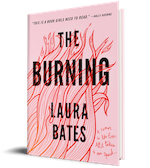


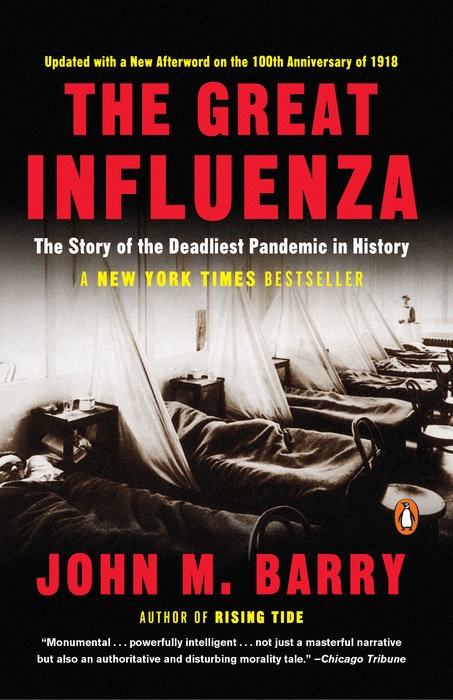 Fifteen years before the global outbreak of coronavirus,
Fifteen years before the global outbreak of coronavirus, 